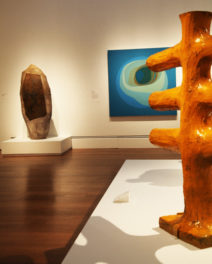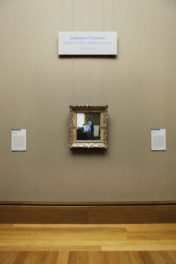A new exhibition at the Getty is all about the book of beasts—the medieval bestiary.
What is a bestiary? It is a richly illustrated book containing stories about lions, unicorns, foxes, whales, and more animals—both real and imagined, common and fantastical. In this video, Getty Museum curators Elizabeth Morrison and Larisa Grollemond introduce a few of their favorite medieval beast stories and explain what makes the bestiary such a fascinating and visually compelling art form.
Book of Beasts: The Bestiary in the Medieval World is on view at the Getty Center until August 18, 2019; admission is free.
Transcript


ELIZABETH MORRISON: When I first started studying the Middle Ages, I was so excited to discover there was an entire type of book devoted just to animals, called the bestiary. And now, in Book of Beasts, I get to share the world’s greatest bestiaries with everyone else.
I’m Beth Morrison, senior curator of manuscripts here at the Getty Museum.
LARISA GROLLEMOND: Hi, I’m Larisa Grollemond. I’m assistant curator of manuscripts here at the J. Paul Getty Museum.
ELIZABETH MORRISON: A manuscript is basically any document that’s handwritten. It comes from the Latin, “manus,” meaning “hand,” and “scribere,” meaning “written.” Anything that is handwritten is actually a manuscript.
LARISA GROLLEMOND: Technically, a manuscript refers to anything that’s handmade, but we use it here in the department to refer to books made between roughly 1000 and 1500.
ELIZABETH MORRISON: A bestiary is a very specific kind of book—more or less a natural history encyclopedia of animals, but instead of encyclopedias today that we think of, that discuss dietary habits or where animals live, the medieval bestiary talked about animals as allegories.
LARISA GROLLEMOND: The story of the pelican in the bestiary is that it gets annoyed with its pesky children, who can’t stop annoying the mother pelican, and so she strikes them dead. She eventually feels very sorry about this, and pierces her own breast in order to let the blood flow down on the chicks, which revives them. This is seen as a symbol for Christ’s resurrection and his sacrifice for humankind.
ELIZABETH MORRISON: The bestiary traces its origins all the way back to the second century A.D. It had its foundations in a text called the Physiologus, which was originally written in Greek. Over the course of the Middle Ages, a lot of material was added from different encyclopedias, different histories of animals, and actually came to be the bestiary as we know it today.
LARISA GROLLEMOND: The bestiary is primarily a Latin text in its origination, but eventually gets so popular that it gets translated into a variety of vernacular languages, most notably in French, although it does get translated into Catalan and Italian, and a number of other languages.
ELIZABETH MORRISON: We think that bestiaries were originally used as a kind of teaching manual, and they were primarily used in religious context, either being read in monasteries or used as preaching material for priests who would preach to the general population.
LARISA GROLLEMOND: Bestiaries were so visually stunning, and the stories were so engaging and memorable, that it seems obvious that secular people would have wanted copies of bestiaries, too. Although we don’t know who commissioned many of the specific manuscripts that are on display in the exhibition, we think that they would have been used by a wide swath of the public.
ELIZABETH MORRISON: I think one of the most popular movies ever made for families is “The Lion King.” The entire plot is basically stolen from the bestiary. The bestiary begins with the lion, and actually the first words of the bestiary are, “The lion is the king of beasts.” This whole idea of a father lion training his son in the art of being the king of all the creatures of the world is taken and stolen directly from the bestiary.
ELIZABETH MORRISON: The Book of Beasts is a really exciting exhibition that I’m so thrilled to share with everyone, because I’ve actually been working on it for almost 10 years. The Getty is fortunate to have three precious bestiaries in its collection.
LARISA GROLLEMOND: What’s really exciting to me about bestiaries is that there’s something that you can come to even if you don’t know anything about them and find so much in them. When you walk up to a bestiary, you can identify the animals, even if you don’t know the story off the top of your head or you’ve never seen one before, the bestiaries are so visually exciting that you can’t help but get excited about them.
ELIZABETH MORRISON: When I first started studying the Middle Ages, I was so excited to discover there was an entire type of book devoted just to animals, called the bestiary. And now, in Book of Beasts, I get to share the world’s greatest bestiaries with everyone else.
I’m Beth Morriso...




Comments on this post are now closed.